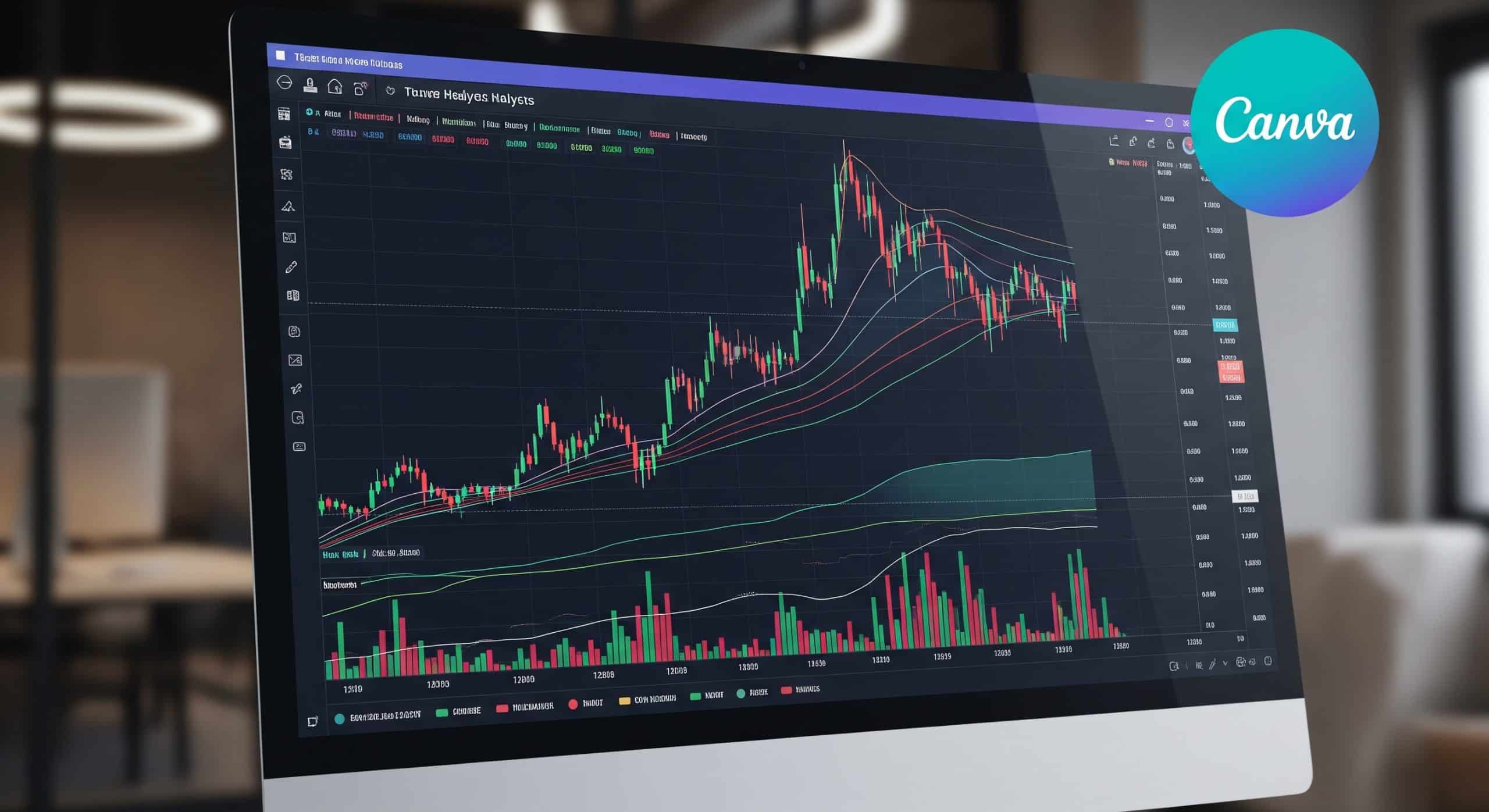The Implications of Canva’s $42 Billion Valuation and Share Sale on the Design Industry
Canva’s recent valuation of $42 billion signifies not just a milestone for the company, but also a transformative moment for the entire design industry. As the design landscape evolves, the implications of such a valuation and the associated share sale could reshape various aspects of design work, collaboration, and accessibility for users around the globe.
First, it is essential to recognize how Canva’s success reflects the rise of user-friendly graphic design tools. The platform’s ease of use has made design accessible to everyone, from small business owners to educators. With a valuation soaring to $42 billion, Canva demonstrates that there is substantial market demand for design tools that democratize creativity.
Investors are showing confidence in this model, and this will likely fuel more innovations in the space. As competition heats up among design software providers, we can expect to see enhancements in technology that not only improve user experience but also introduce more advanced features. Some potential shifts include:
- Increased integration of artificial intelligence, allowing for smarter design suggestions.
- Enhanced collaboration features that enable real-time editing by multiple users.
- Expanding asset libraries with more templates, images, and design elements for various industries.
The $42 billion valuation also signifies the financial power of digital communication. As businesses increasingly rely on visual content—be it for marketing, educational materials, or social media—having a robust yet straightforward design tool can be pivotal. Canva’s reach may lead to other platforms investing heavily in similar functionalities to retain or gain market share.
Moreover, the implications of Canva’s share sale extend beyond just competition and investment. This event could usher in new partnerships between tech companies and educational institutions. Many schools are already using Canva to teach design principles, and with new funding, the company could expand its offerings. Imagine a future where students not only design graphics but also gain business insights about branding and marketing through hands-on activities. This could lead to:
- Workshops and courses sponsored by Canva in schools and colleges.
- Collaborative projects that bring students and professionals together to create real-world design work.
- Scholarships or grants for educational institutions that foster design education.
For freelancers and creative professionals, the influx of resources into Canva might mean better tools for workflow, communication, and project management. As they embrace this digital shift, they will likely become more efficient and able to take on larger projects. However, it may also intensify competition but can drive up the quality of work. Freelancers may need to continuously adapt and improve their skills to stay relevant in a crowded space.
Another significant effect can be observed in social media marketing efforts. Since brands and businesses are keen on creating eye-catching graphics, Canva allows even non-designers to produce high-quality content that can stand out in crowded feeds. As more individuals and brands get savvy about visual storytelling, we may see a spike in demand for branded design kits that come from platforms like Canva. This means:
- Brands may increasingly rely on templates tailored to specific demographics and markets.
- The line between professional and amateur designs could become blurred, leading to more cross-pollination of styles.
- Businesses may prioritize investing in design tools for their teams, shifting budgets previously allocated for traditional graphic design services.
The valuation of $42 billion also reflects the evolving landscape of remote work and digital collaboration. As more companies adapt to hybrid or fully remote work environments, the need for effective tools for collaboration is essential. Canva’s visual communication capabilities offer a vital solution for teams to brainstorm and conceptualize ideas collectively, regardless of their physical location. Collaboration can become more asynchronistic, allowing teams from various time zones to contribute to projects in a streamlined manner.
Canva’s $42 billion share sale is more than just a remarkable feat for the company itself. It represents a significant shift in how design is approached, taught, and utilized across various fields. The implications reach far and wide, influencing everything from education to professional workflows and marketing strategies. As we watch the evolution of this creative tool unfold, it will be fascinating to see how it continues to impact the design industry and empower individuals worldwide.
Analyzing the Future of Tech Companies Post-IPO: Trends and Predictions
The landscape of technology companies is ever-changing, especially for those that go public. Companies choosing to file for an Initial Public Offering (IPO) mark the beginning of a new chapter that comes with both opportunities and challenges. As these companies navigate their post-IPO journey, understanding trends and predictions can be crucial for investors, stakeholders, and observers alike. Here, we delve into the evolving dynamics of tech companies after they hit the public market.
One of the most significant trends among newly-public tech firms is the heightened focus on sustainable business practices. Investors today are demanding more than just revenue growth. They are increasingly interested in Environmental, Social, and Governance (ESG) factors. Companies that prioritize sustainability may find themselves better positioned to attract long-term investors. The focus on eco-friendly practices not only enhances brand reputation but can also lead to operational efficiencies, making this a pivotal area for growth.
Another defining trend is the surge in demand for tech-driven solutions in various sectors. Post-IPO, tech companies often pivot their strategies to leverage their public status for partnerships and collaborations. Businesses in healthcare, education, and logistics are particularly ripe for technology-driven disruptions. Investors should watch for companies that establish themselves as leaders in these sectors after their IPOs, as they may be poised for rapid expansion and profitability.
- Emphasis on Data Privacy: As tech companies expand, they are under more scrutiny regarding data privacy and protection. Firms that demonstrate a commitment to safeguarding user data will likely stand out in a crowded marketplace.
- Expansion into Emerging Markets: Companies will seek growth opportunities beyond their home markets. Emerging economies represent untapped potential, and firms that venture into these regions can benefit from new customer bases.
- Increased Competition: Post-IPO, tech companies face the reality of being publicly traded. They must contend with heightened competition not only from peers but also from traditional companies adopting digital solutions.
The companies that are able to innovate continuously will have a significant edge. The tech landscape changes rapidly, with new advancements shaping how businesses operate. After going public, companies must allocate resources for research and development to stay ahead of the curve. This involves creating new products or enhancing existing services to meet changing consumer demands.
Moreover, tech companies must also navigate the complexities of market expectations. After an IPO, they are under constant scrutiny from analysts and investors who demand transparency and accountability. Meeting quarterly earnings expectations can become a primary focus, sometimes at the expense of long-term strategic goals. Companies that can successfully balance short-term performance with long-term vision will likely achieve sustainable growth.
Employee dynamics also play a crucial role in the success of tech companies post-IPO. Employee retention and satisfaction become paramount as organizations evolve. Often, attracting top talent hinges on the company’s culture and its public reputation. Offering competitive benefits and fostering an inclusive workplace can help tech firms retain skilled professionals, which is essential for continued innovation.
Investors need to keep an eye on how these companies manage their equity. After going public, stock options become a pivotal part of employee compensation packages. Companies that effectively manage their employee stock option plans can build loyalty and encourage employees to invest their futures in the company they work for.
In addition, the role of technology itself is likely to evolve as machine learning and artificial intelligence continue to advance. Tech companies that embrace these tools for decision-making and operations management will likely gain a competitive edge. For example, predictive analytics can play a significant role in helping companies understand market trends and customer behaviors, thus refining their strategies effectively.
We should not overlook the importance of community engagement. Tech companies post-IPO that engage with their local communities and prioritize corporate social responsibility can build stronger reputations. This not only attracts consumers but also garners respect within the industry, which can lead to beneficial partnerships.
In essence, the future for tech companies following their IPO seems promising yet complex. They must maneuver through a maze of trends, expectations, and market dynamics while remaining innovative and responsible. As you track these developments, focus on how companies adapt to the changing environment, which will tell you much about their potential for success in the ever-evolving tech landscape.
Conclusion
Canva’s remarkable valuation of $42 billion and its strategic share sale mark a significant moment in the design industry and the tech sector as a whole. This move highlights Canva’s strong market position and growth potential, paving the way for new innovations and increased competition. As more businesses recognize the importance of scalable design solutions, Canva’s leadership could inspire similar companies to follow suit, further democratizing design access for users worldwide.
Analyzing the future of tech companies post-IPO, it becomes evident that trends such as user-centric design, sustainability, and AI integration will play crucial roles. Companies that can adapt to these trends will likely thrive. Investors are increasingly seeking firms that not only show potential for profit but also contribute positively to society. Canva’s focus on providing accessible design tools aligns with this growing demand, which may provide it with a competitive advantage in the coming years.
As the landscape shifts, established players and startups alike must navigate the evolving expectations of consumers and investors. Tech companies that embrace innovation while staying true to their core mission, much like Canva has, will be well-positioned to succeed. Ultimately, Canva’s journey post-IPO offers compelling lessons on adaptability, customer focus, and the importance of staying ahead of industry trends. Interested stakeholders should keep a close eye on how this bold move will resonate throughout the design community and the broader tech industry as companies re-evaluate their strategies to remain relevant and impactful.
Comparison, examination, and analysis between investment houses
Leave your details, and an expert from our team will get back to you as soon as possible
* This article, in whole or in part, does not contain any promise of investment returns, nor does it constitute professional advice to make investments in any particular field.
To read more about the full disclaimer, click here- Articles
- •
- 11 Min Read
- •
- ago 5 minutes
 Walmart Earnings: What To Look For From WMT
Walmart Earnings: What To Look For From WMT
Walmart Earnings: What to Look For From WMT Analyzing Walmart Earnings: Key Indicators to Watch Walmart, the world’s largest retailer,
- ago 5 minutes
- •
- 11 Min Read
Walmart Earnings: What to Look For From WMT Analyzing Walmart Earnings: Key Indicators to Watch Walmart, the world’s largest retailer,
- orshu
- •
- 8 Min Read
- •
- ago 44 minutes
 Global Markets Wrap: Tuesday, August 19, 2025 Performance in Focus as Tel Aviv Gains While U.S. and Asia Slip – Full Outlook for Wednesday, August 20
Global Markets Wrap: Tuesday, August 19, 2025 Performance in Focus as Tel Aviv Gains While U.S. and Asia Slip – Full Outlook for Wednesday, August 20
Global markets closed mixed on Tuesday, August 19, 2025, with investors navigating a sharp divergence across regions. U.S. equities ended
- ago 44 minutes
- •
- 8 Min Read
Global markets closed mixed on Tuesday, August 19, 2025, with investors navigating a sharp divergence across regions. U.S. equities ended
- Ronny Mor
- •
- 16 Min Read
- •
- ago 1 hour
 Opendoor, Purple, Peloton, DraftKings, and FuboTV Stocks Trade Down: What You Need to Know
Opendoor, Purple, Peloton, DraftKings, and FuboTV Stocks Trade Down: What You Need to Know
The Impact of Declining Stock Prices on Opendoor, Purple, Peloton, DraftKings, and FuboTV: Insights for Investors The stock market can
- ago 1 hour
- •
- 16 Min Read
The Impact of Declining Stock Prices on Opendoor, Purple, Peloton, DraftKings, and FuboTV: Insights for Investors The stock market can
- sagi habasov
- •
- 17 Min Read
- •
- ago 1 hour
 TechCrunch Mobility: Ford’s Big Bet
TechCrunch Mobility: Ford’s Big Bet
The Impact of Ford’s Big Bet on Future Mobility: Insights from TechCrunch Ford has made headlines lately with its ambitious
- ago 1 hour
- •
- 17 Min Read
The Impact of Ford’s Big Bet on Future Mobility: Insights from TechCrunch Ford has made headlines lately with its ambitious












